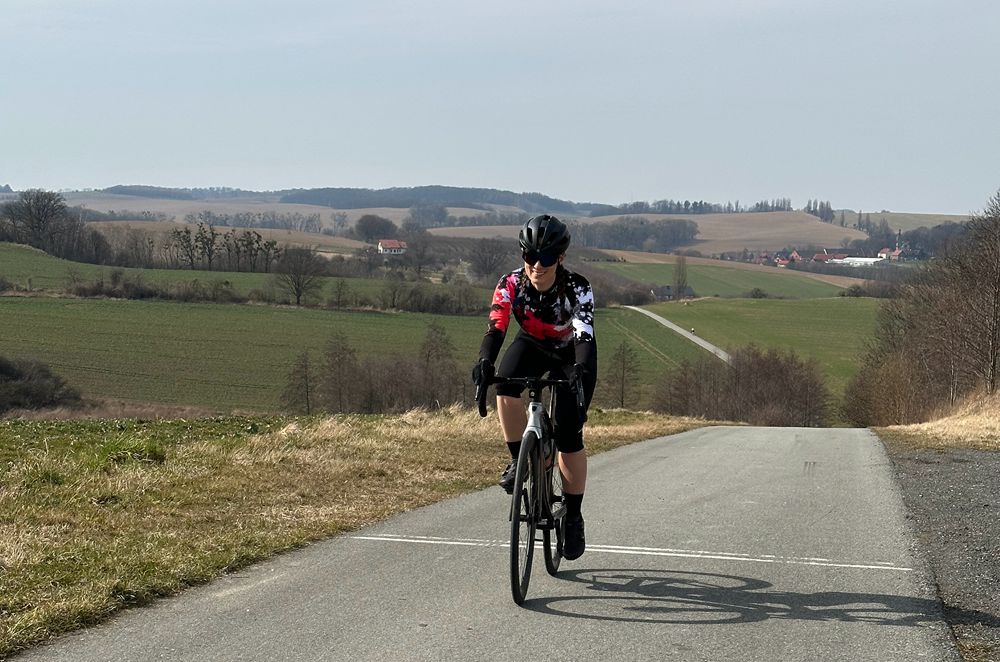Broken Hip Recovery Advice For Cycling
We all have had that moment where we hurt our hips from playing sports or being active, which can be a very frustrating experience. Resting your hip for two weeks after an injury is almost always recommended, but if you're like many of us and don't have the patience to wait out the recovery time, you can do a few things.
Make sure that you see a doctor first, of course. But here are some tips and knowledge that many people would agree can help heal broken hips more quickly.
About Broken Hip Recovery
Recovery is much more than just resting the hip. Many people confuse the symptoms of a broken hip with the bones being fractured, but the condition is far more complex.
A broken hip is caused by a sudden jolt or powerful impact on the hip. A broken hip happens because of an impact on your side, falling, or even being involved in a car accident.
A fractured hip can happen at any age, but children are likelier to have the condition than adults. A broken hip can cause severe pain in the lower leg and hips, making physical movement painful and hard to bear.
The pain may also be accompanied by a feeling of heaviness in the leg from the injury, resulting from inflammation immediately after the initial trauma.
Broken hip recovery is not a permanent, one-time healing process. You can still work towards a speedy recovery with some of the following advice.
Best Ways to Recover From a Broken Hip
Broken hips need extra attention to return to their normal state. You can copy these approaches to make your broken hip heal faster.
1. Stay Active
Please stay in bed and forget everything, but that is not the real world.
You can do small tasks like walking around while waiting for the pain to subside. If you have been told to stay active, you should keep a healthy balance between active and inactive periods.
Remember that exercise can be one of the most effective ways to improve your healing process. Even simple movements can help, so don't hesitate to do some physical movements that won't put too much pressure on your hip region.
2. Eat Good Food
A balanced diet can be one of the best ways to recover from a broken hip.
A meal rich in nutrients can provide all the necessary nutrients your body needs to recover from injuries. Ensure that all of your meals are fresh and nutritious, so if you don't feel like eating, you don't have to overdo it and skip it just because of your broken hip.
It's also important for the blood flow to be adequately restored after an injury, so getting plenty of essential vitamins and minerals into your body after a medical procedure or accident is vital.
Certain foods that many overlook include fish, fruits, and eggs - these are great sources of daily vitamins and minerals for most people's diets. Bone stew soup is another popular option, and that is because it is rich in calcium and it contains plenty of beneficial vitamins. You can prepare it alone or find powdered bone stew soup in any grocery store.
3. Get Enough Rest
When you are wounded and need extra care, you need to take the time to rest your hip. Be sure to know how much rest your body needs because if you push yourself too far, your hip will not heal properly.
Taking a sleeping pill for pain can also help you recover quickly from a broken hip since it can improve your ability to fall asleep at night when you feel overly stressed.
4. Take vitamins and supplements
Supplements are a great way to add more nutrients to your diet if you aren't feeling well enough to eat them all.
Supplements are only one of the best alternatives. Still, you can only eat a nutritious diet with some difficulty. In that case, you should supplement your diet with vitamins and other beneficial minerals to give your body extra strength and nourishment.
Remember that while taking supplements during this time is often beneficial, overdoing it can do more harm than good.
5. Listen to Your Physiotherapists
Listen to your doctor's instructions regarding healing from a broken hip.
A physiotherapist can help you determine how long you should stay in bed and how often you should be active, depending on the severity of your injury. If a physio feels that you are ready for more activity than is suggested, that is the best thing for your recovery.
Some people prefer attending physical therapy sessions regularly instead of seeing their GP or physiotherapist once injured. Try to follow their recommendations closely so that there are no surprises.
6. Manage the Pain
It can be hard to forget the pain when you are in pain, but managing it is important if you want to heal more quickly.
Painkillers may help with the discomfort and make the recovery process easier by healing faster. Many brands are out there, so it would be best to consult your physician before deciding which medicine suits you.
7. Change Your Home Arrangement
During these situations, you may have to minimize your risk of falls in your house by switching to a different sleeping position, such as lying on your side or a pillow under your knees. You can also ask someone to place a small pillow between the vertebrae on both sides of your back for extra support.
You can also put handrails on both sides of your bathtub to get in and out safely.
8. Stay Positive
Being positive helps you be more mentally calm, which may also help with the healing process. Taking a deep breath and appreciating even the smallest things in your day may help you feel better physically and emotionally.
Diagnosis and Treatment Of Hip Fracture
Now that you have some of the best advice to speed up your healing process, you should consider consulting with a doctor to see whether you need an x-ray and other medical tests to help ensure you recover the best way, given your conditions.
Biking reduces abdominal fat while increasing healthy fat: Riding for thirty to sixty minutes and eating healthy, balanced diets are efficient methods to reduce body fat and raise good fat levels. This can reduce many health hazards and aid in shedding pounds.
Here is the diagnosis and treatment process for a broken hip to guide you through the process:
Diagnosis:
1. Physical Exams
It is highly recommended that you seek medical attention as soon as possible when you suspect that you have suffered from a hip fracture.
Before being sent to the hospital, ensure that someone calls an ambulance so that a trained professional can immediately examine your health condition. Bring someone with you so they can drive safely and help take care of some of your needs while you wait to see the doctor.
2. Imaging Tests
X-rays are the most common used imaging test to diagnose a hip fracture.
The next step is to get an x-ray of your hip region, showing the doctor exactly what needs to be done.
Your doctor can tell that you have broken your hip at the very least, but they can also determine whether they need surgery to treat your injury. They may also suggest putting a cast on your hip, which can help when it comes to healing.
Your doctor can also order a CT scan or MRI if you suffer from a more serious injury than a simple fracture.
Treatments:
1. Rehabilitation
Physical therapy is recommended for people who have suffered from a hip fracture since it helps to improve their natural healing process.
Patients need to take plenty of rest and avoid overdoing it as much as possible. Also, they should be aware that there may be some changes in their routine activities.
2. Surgery
If you cannot recover from your hip fracture naturally, your surgeon may suggest that you undergo surgery if the injury is severe enough. Hip pinning or replacement surgeries are the two most common surgeries to correct complex fractures.
3. Medications
Prescribed medications can help to reduce pain during recovery, which will aid with the healing process. To ensure you don't experience any side effects from the medication, your doctor may also recommend a short course of painkillers or muscle relaxants while recovering.
Because driving can be dangerous if you have been taking painkillers, some people won't be given any drugs. It is up to the discretion of your physiotherapist and whether or not the medications are likely to cause any adverse events when taken with other medications or alcohol.

Tips and tricks on how to heal faster after hip fracture surgery
Recovery from hip fracture surgery can be slow and challenging, but several tips and tricks can help you heal faster and make the process more comfortable.
Here are some things you can do:
1. Physical therapy and exercises
Activities that mimic daily activities, such as walking and climbing stairs, can be started once you are out of the hospital. Your physiotherapist will help you determine which exercises are suitable for you.
2. Painkillers
Because pain can make you feel weak and uncomfortable, ensure that the painkillers prescribed by your doctor give you the right relief to continue your normal routine without any difficulty or discomfort.
3. Stay Hydrated
Drinking plenty of water is important for healing, so drinking at least 2 – 3 liters of water every day is good. It can help flush out toxins and promote healing.
4. Reduce Risk Factors
Several things can affect the healing process by causing pain and swelling (leaks). Try to avoid contributing these factors as much as possible during recovery.
5. Practice a Balanced Diet
A diet of proteins, fruits, and vegetables can help reduce pain, prevent infection, and increase blood flow. A diet rich in protein and vitamins can help promote healing and prevent infection.
It would help if you tried to avoid drinking caffeine to heal faster.
6. Relax
Try to relax while healing and undergoing rehabilitation. It is essential to get enough sleep and take breaks to avoid overexertion.
7. Avoid Excess Weight
Excess weight can increase the risk of complications, so you will want to work on losing weight if it is causing problems in your recovery. Your doctor may tell you how many calories you should be eating daily during recovery, so follow that advice strictly and don't skip meals or cut out any food groups completely.
8. Don't Wear Restrictive Clothing
Wearing restrictive clothing such as high heels or tight skirts can be very uncomfortable and could prolong your recovery.
9. Ice and Elevation
Ice can reduce swelling, so you should ice your hip regularly to relieve any swelling and pain you may be experiencing while healing. Elevating the leg that was operated on can also reduce pain, so do this as much as possible.
10. Self-care
Taking care of yourself can help with the healing process and make you feel better emotionally during recovery time. Try to avoid arguing as much as possible with other people or family members who may not understand what you are going through – even if they are trying to be supportive.
11. Ask For Help
Don't hesitate to ask for help from family and friends if needed. They can assist you with everyday activities like shopping, cooking, and cleaning.

Broken Hip Recovery Time
With the best ways above, you are likely to heal faster. A broken hip recovery time is typically 6 – 8 weeks, but this can vary depending on the fracture type and the severity of your injury.
The main focus during that time should be physical therapy and simple exercises so that you will have full mobility within a few months.
It would be wise to wear a brace or anti-embolism stockings for some time because of the injuries to your leg following a hip replacement surgery.
Conclusion
Recovery after a hip fracture is completely dependent on the natural healing process. During the initial recovery phase, patients require a lot of rest and patience as they heal. After rehabilitation, they can begin physical therapy and games such as swimming and walking.
RELATED ARTICLES
【Treat Saddle Hurt Sore】
https://santic.com/blogs/extra/treat-saddle-hurt-or-sore
【Cycling Recovery Tips】
https://santic.com/blogs/extra/cycling-recovery-tips





